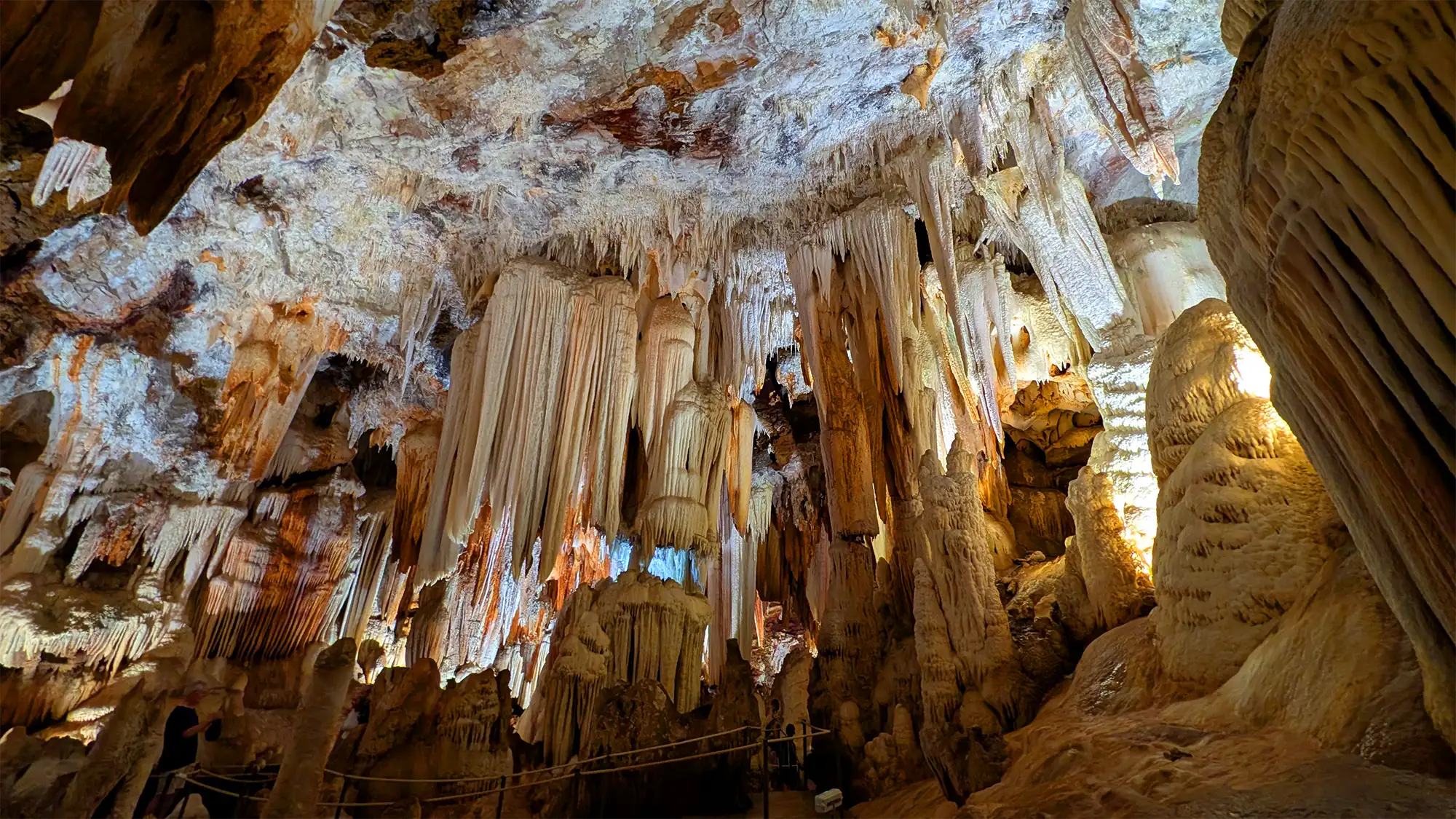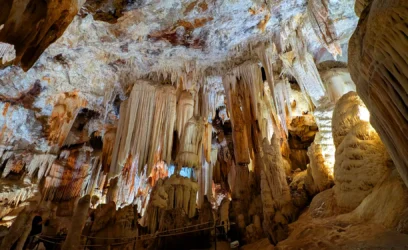The Cueva del Águila (Eagle’s Cave) is one of Spain’s most important tourist caves, located in the province of Avila, within the Sierra de Gredos mountain range. Thanks to its location and easy access, it is a popular destination for day trips, particularly for those visiting from Madrid.
The cave was discovered by chance on Christmas Eve 1963 and opened to the public a year later. Its interior consists of a single, vast chamber of 10,000 square metres, filled with impressive geological formations such as stalactites and stalagmites. The cave’s discovery was a major event in Spain. For those who are curious, here is an old piece of news on the find (please note, the video is in Spanish).
How to get to the Cueva del Águila
The Cueva del Águila is located in the province of Avila, near the village of Ramacastañas and 9 km from Arenas de San Pedro, the main town in the area. Access is very well marked, and there is a large, free car park on-site.
By car from Madrid
The most common and recommended way to get there is by car. The journey takes approximately 1 hour and 45 minutes, depending on traffic leaving Madrid.
The main route is via the A-5 motorway (towards Badajoz). Take exit 123 for Talavera de la Reina, then follow the N-502 road towards Avila. The entrance to the cave will be marked on your right, just after Ramacastañas.
By public transport
Let’s be direct: we do not recommend this option. Although there is a bus service run by the company Samar that stops in Ramacastañas, the main problem is the final leg of the journey. From the bus stop to the cave entrance is almost 5 km.
This would have to be covered on foot (roughly a 1-hour walk along a road with no proper pavement) or by taxi, a service which is not readily available in the small village. Due to these difficulties and the additional cost, visiting by public transport is highly impractical.
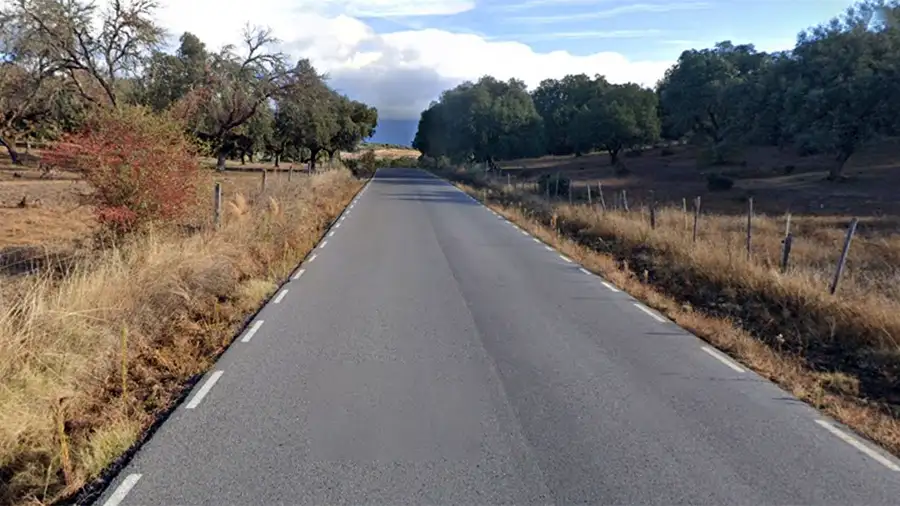
Tickets and opening times for the Cueva del Águila
The easiest way to buy tickets for the Cueva del Águila is on-site at the ticket office. While there is an online booking system on their official website, it is not necessary to book in advance, and you can simply buy your tickets at the ticket office on arrival.
An important detail: even if you buy your ticket online, you must still validate it at the ticket office before entering.
Ticket prices (2025 rates)
- General Admission (adults): €11
- Child ticket (ages 5 to 10): €8
- Agency groups (20+ people): €9 per person
- School groups: €8 per person
- Children under 5: Free entry
Payment can be made at the ticket office by card or in cash.
Opening times
The cave is open every day of the year, with seasonal hours for summer and winter.
- Spring/Summer hours (21st March to 21st September):
- Mornings: 10:30 a.m. to 2:00 p.m.
- Afternoons: 4:00 p.m. to 7:00 p.m.
- Autumn/Winter hours (22nd September to 20th March):
- Mornings: 10:30 a.m. to 1:00 p.m.
- Afternoons: 3:00 p.m. to 6:00 p.m.
Please note: During the spring/summer period, the lunch break is longer, with the ticket office closed between 2:00 p.m. and 4:00 p.m.
About the tour and tickets
The tour: All tours are guided, last approximately one hour, and groups are formed on a first-come, first-served basis.
Flexibility: If you buy a ticket online and cannot make it on the specified date, it is non-refundable. However, it can be used on a future date simply by presenting the original ticket.
Recommendation: As the venue itself states that booking in advance is not required, the simplest option for most visitors is to buy a ticket at the ticket office on arrival. Buying online may be useful for those who wish to pay in advance.
What the tour at the Cueva del Águila is like
When you arrive and park your car, the first thing to do is go to the ticket office. You’ll find it easily: head past the souvenir shop and the tables, and it’s up a small flight of stairs at the back. There, you can either buy or validate your ticket.
It’s normal to have a short wait until a large enough group has formed for the next tour. Fortunately, the waiting area is well-equipped for this, with toilets, a small souvenir shop, tables and chairs, and vending machines for drinks and snacks.
When it’s time, an announcement is made, and the group heads to the cave entrance. There:
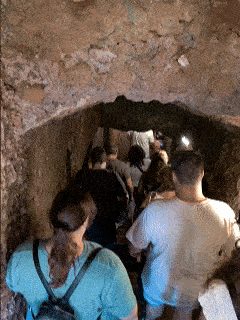
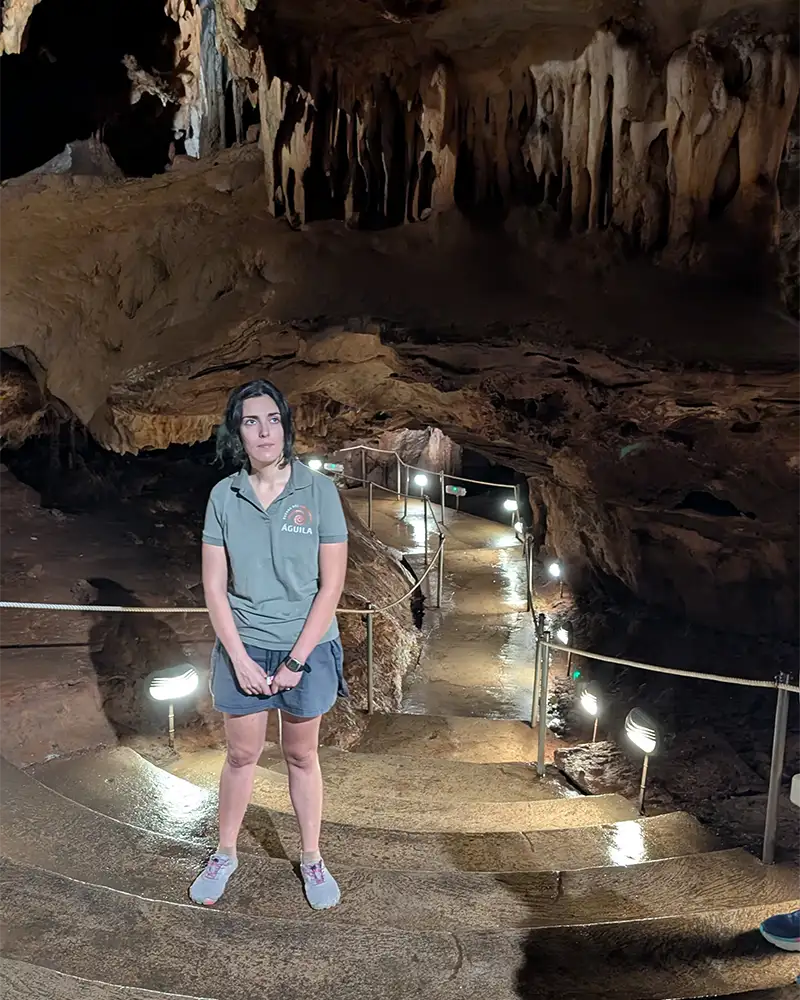
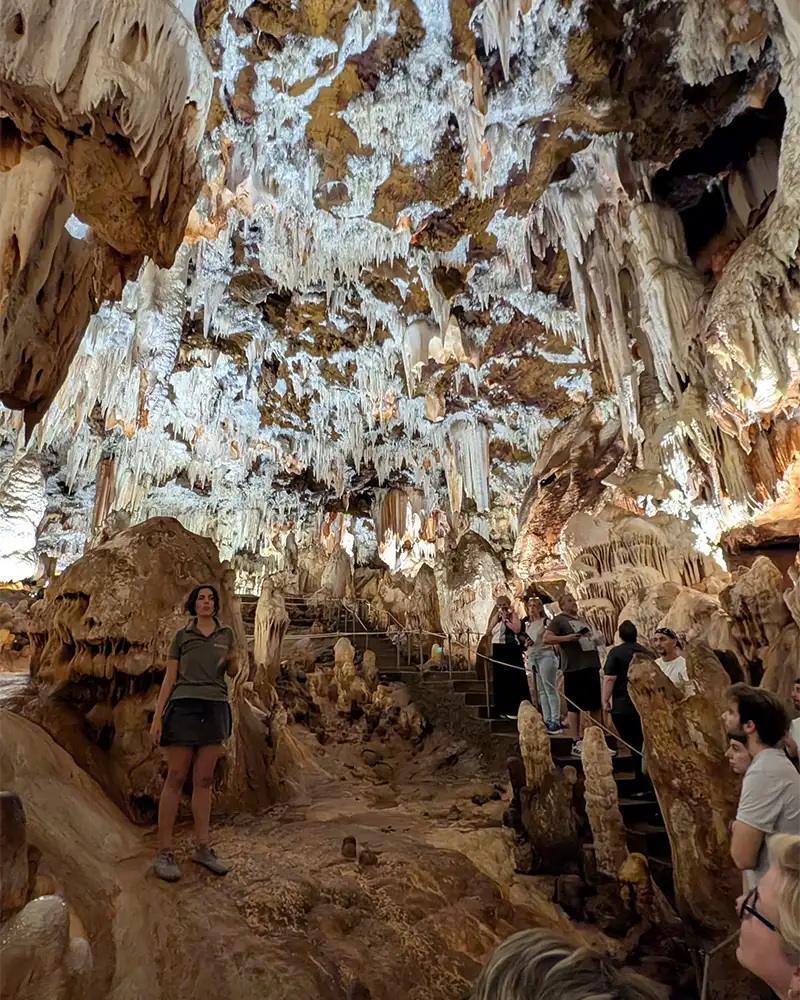
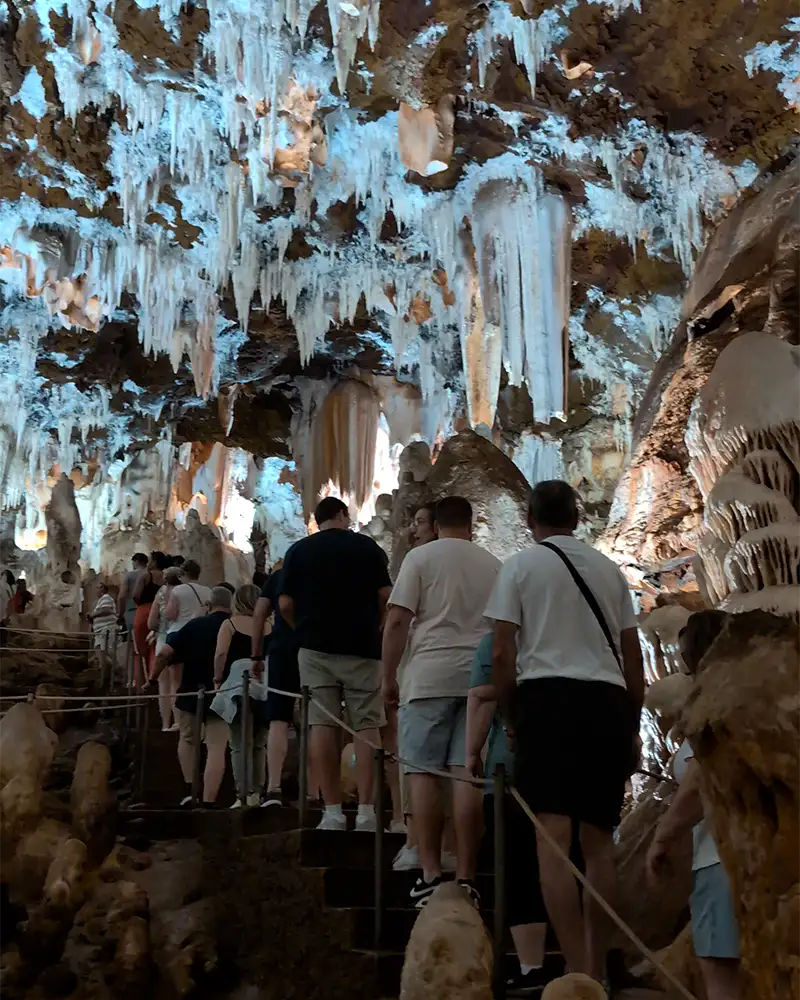
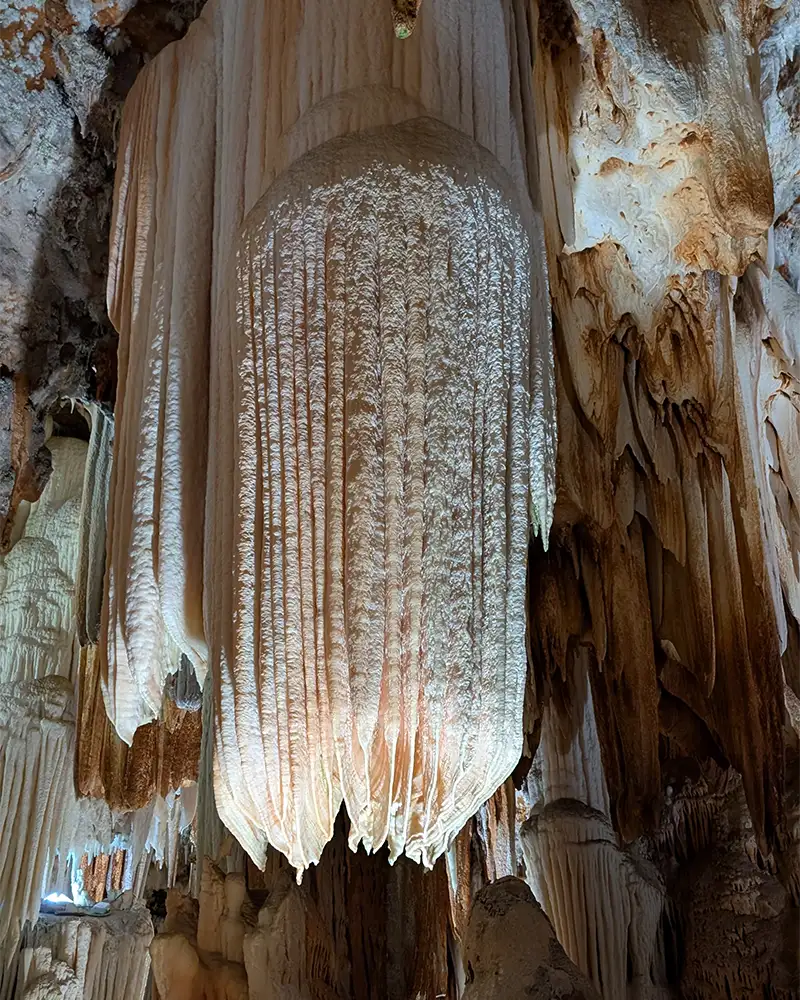
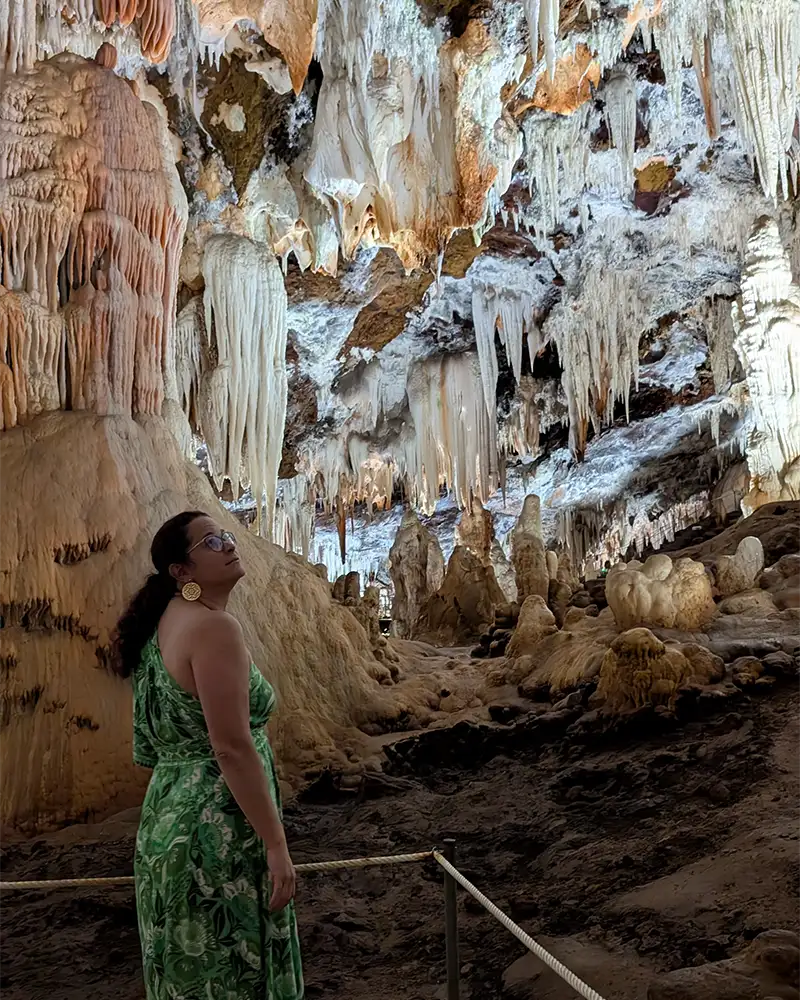
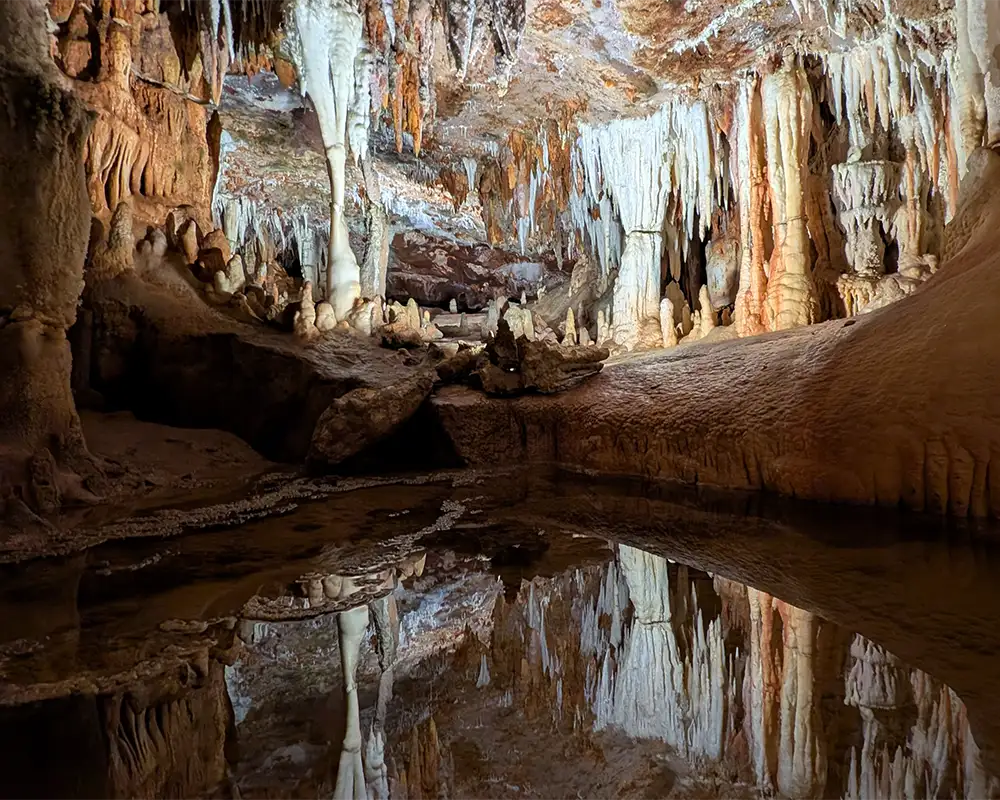
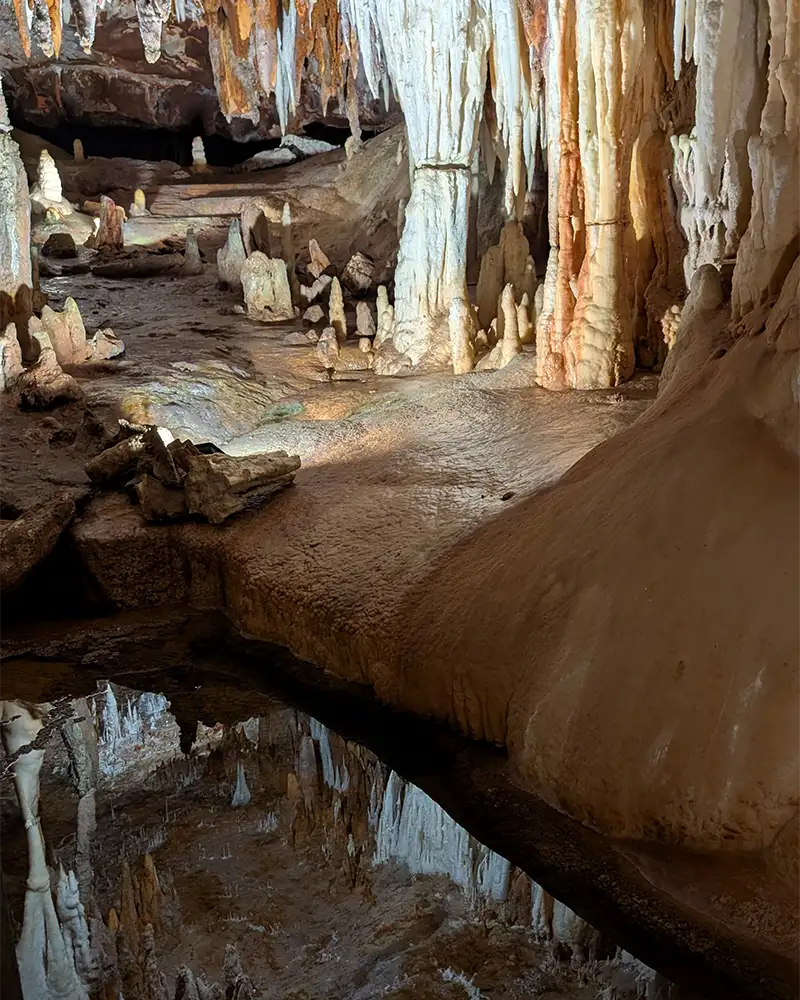
The verdict: is it worth it?
So, after all the details, the question remains: is it really worth visiting the Cueva del Águila?
Our honest answer? A big, resounding yes! It’s the kind of trip that is genuinely surprising and memorable. The most captivating part is the sheer impact of entering a single, gigantic underground “cathedral”, knowing it took nature half a million years to create. As well as being a very well-preserved and safe place, it’s a perfect escape from the sweltering Spanish summer heat. With a constant temperature of 17°C, the climate inside is delightful.
Of course, there are a couple of points to bear in mind. Firstly, access to the cave is via stairs, which unfortunately makes the visit difficult for those with reduced mobility. Secondly, as it is a group tour, keen photographers might find the pace a little quick to capture that perfect shot.
Aside from that, the Cueva del Águila is a fantastic option for a day trip, especially for those based in Madrid. It’s a natural spectacle that is completely worth the visit.
Practical tips for your visit
To make sure your visit is perfect, here are a few quick and important tips:
- Food and drink: There are vending machines for snacks and drinks in the waiting area, but eating or drinking is not permitted during the tour inside the cave.
- Wear the right footwear: The cave floor is damp and can be slippery. It is best to wear trainers or closed-toe shoes with a non-slip sole. Sandals and heels are not a good idea.
- Bring a jacket: Even if it’s 40°C outside, the temperature inside the cave is always 17°C. If you tend to feel the cold, bring a long-sleeved top or a light jacket so you don’t get cold.
- Accessibility: This is a point to note. The access to the cave and the path inside have stairs and uneven surfaces, which makes it unsuitable for wheelchairs and pushchairs.
- Be prepared to wait a little: As there are no timed reservations, be prepared to wait up to 30 minutes, especially on public holidays and weekends.
- Photography rules: You can take photos, but the use of flash is strictly forbidden to protect the formations. Filming is also not permitted.
The most important rules are:
- It is forbidden to touch the walls and the formations so as not to contaminate them and interfere with their natural process.
- It is permitted to take photographs, but always without flash.
- It is forbidden to film during the tour.
What to do near the Cueva del Águila
Your visit to the cave will last about an hour, so why not make the most of the rest of the day? The Cueva del Águila is in the heart of the Tiétar Valley, a region of Avila full of nature, history, and good food.
Here are a few suggestions to combine with your tour for a perfect day out:
Visit the centre of Arenas de San Pedro
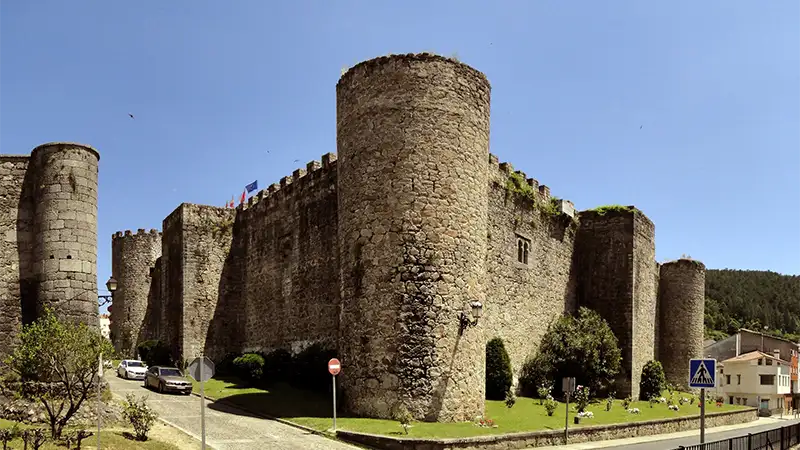
Just a 10-minute drive from the cave, Arenas de San Pedro is the main village in the region and a charming place for a stroll. Be sure to see:
- The Castle of the Sad Countess (Castillo de la Triste Condesa): A medieval castle right in the town centre, which is its main landmark.
- The Medieval Bridge (Ponte Medieval): A picturesque stone bridge over the river, perfect for a walk.
- The Palace of Prince Don Luis de Borbón (Palacio del Infante Don Luis de Borbón): An impressive neoclassical palace with beautiful gardens.
Cool off in the natural pools (in summer)
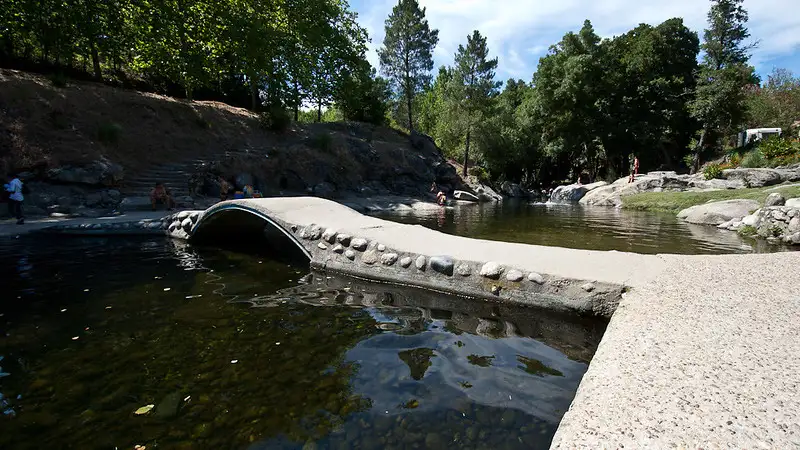
If you’re visiting during the warmer months (June to September), one of the best things to do is follow the locals’ lead and cool off in one of the natural pools (piscinas naturales). These are dammed sections of the river with crystal-clear water, ideal for a dip.
The most famous are the Arenas de San Pedro Natural Pools (Piscinas Naturales de Arenas de San Pedro). To find them, just put the Spanish name into your GPS. They are well-equipped, with grassy areas for relaxing and nearby bars, making it a perfect plan for a summer afternoon after visiting the cave.
Explore the nature of the Sierra de Gredos
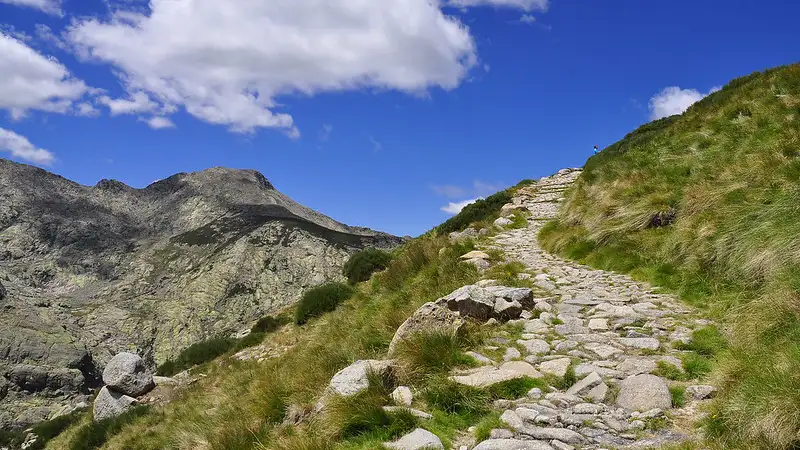
For a quick yet impressive taste of the mountains, here are three suggestions:
- The easiest view (by car): Drive up the N-502 road to the Puerto del Pico viewpoint (Mirador del Puerto del Pico). The view of the valley and the old Roman road below is spectacular and requires no walking.
- A historic walk: At the viewpoint itself, walk a few metres along the Roman Road (Calzada Romana). It’s amazing to think the Romans built this road over a thousand years ago, and the initial stretch is completely flat.
- Picturesque villages: Take a short drive through the villages of Guisando and El Hornillo. The road to get to them is a scenic drive in itself, with beautiful views of the sierra’s granite peaks.
Savour the local gastronomy
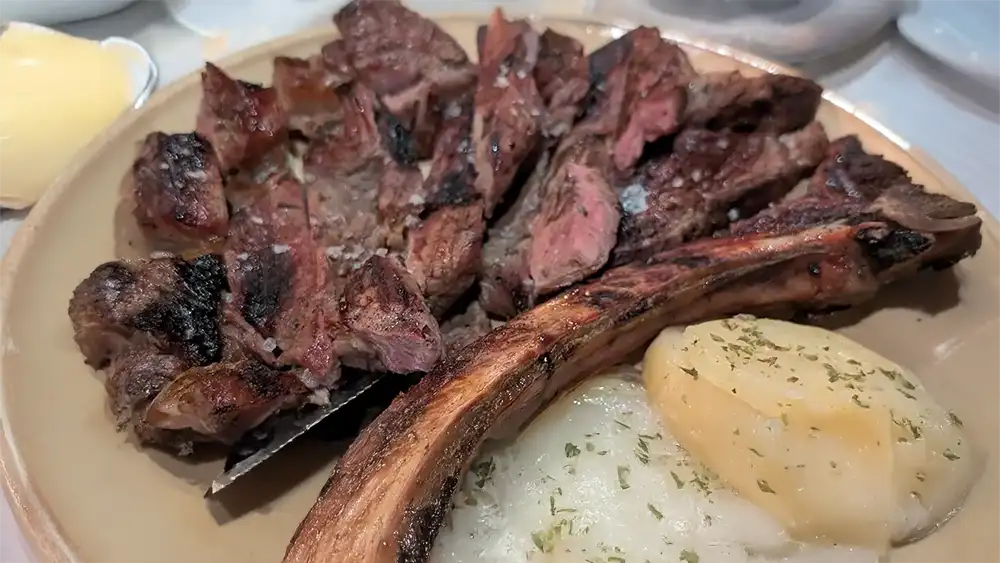
Take the opportunity to have lunch at a local restaurant and try the typical dishes of Avila. Keep an eye out on the menus for delicacies such as:
- Judías del Barco: a famous and very tasty white bean stew.
- Patatas revolconas: a rustic mashed potato dish with paprika and pork scratchings.
- Avila’s Veal Chop (Chuletón de Ávila): a giant veal chop, a classic for meat lovers.
This guide has brought together all the practical information you need to plan your visit to the Cueva del Águila. The tour of the cave is a visually stunning experience, characterised by the grandeur of its unique and well-preserved main chamber.
As we’ve seen, the tour can easily be combined with other activities in the area, such as exploring the village of Arenas de San Pedro, taking a light hike in the Sierra de Gredos, or savouring the local gastronomy, allowing you to create a full-day itinerary.
We hope this detailed guide helps you plan your trip. If you’re looking for a surprising and unique destination near Madrid, the Cueva del Águila is undoubtedly a fantastic choice.
Have a great trip!

